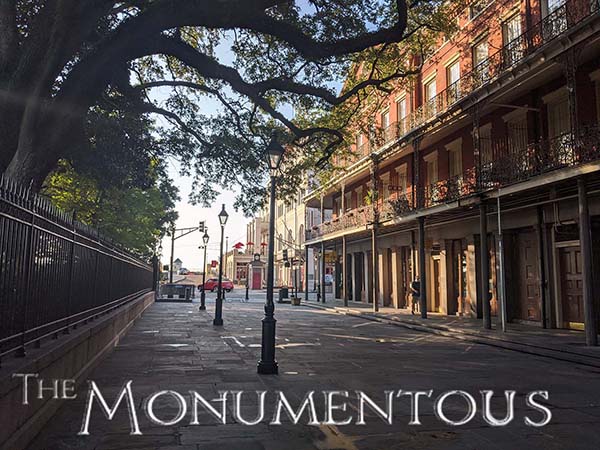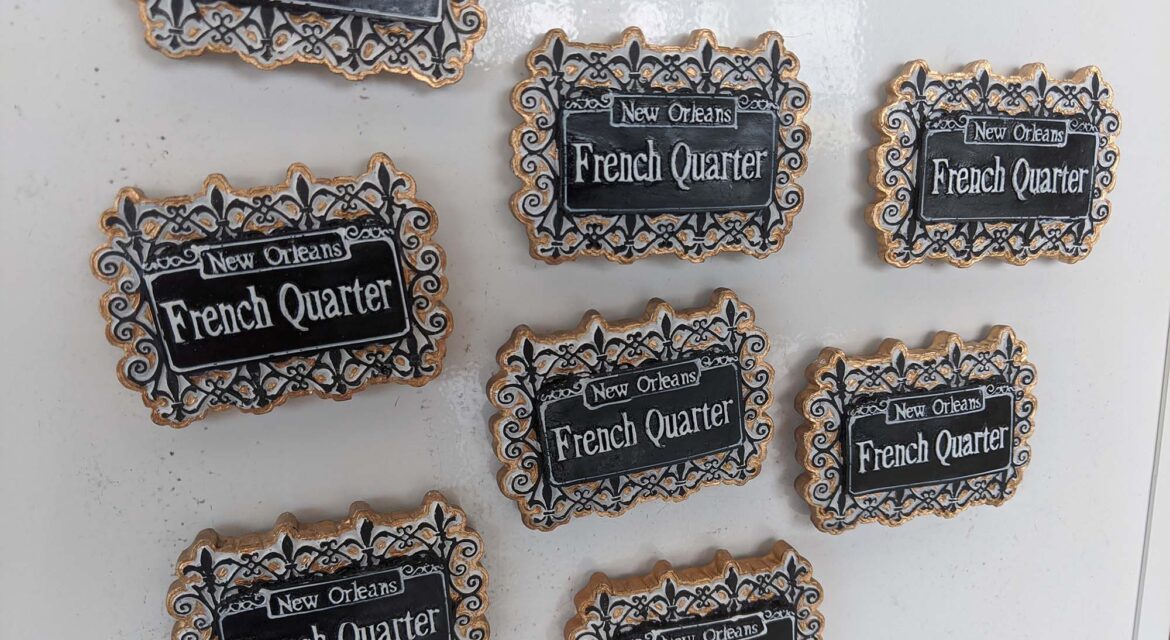 One of the oldest neighborhoods in the city of New Orleans, Louisiana, the French Quarter is the most famous section of New Orleans and is recognized all across the United States. A prime tourist destination that has also attracted the attention of residents with countless activities and events, the French Quarter has been able to shape an identity that captivates audiences of all types and has helped drive interest from across the world.
One of the oldest neighborhoods in the city of New Orleans, Louisiana, the French Quarter is the most famous section of New Orleans and is recognized all across the United States. A prime tourist destination that has also attracted the attention of residents with countless activities and events, the French Quarter has been able to shape an identity that captivates audiences of all types and has helped drive interest from across the world.

The Vieux Carré
After the city was founded in 1723, New Orleans developed around the central square, or the Vieux Carré (“Old Square” in English), as it came to be known. The district would eventually become known as the French Quarter, which is heavily influenced by the historic nature of the setting and surroundings. Historical reminders and markers are all over the French Quarter and include the buildings themselves.
 The Old Ursuline Convent is the oldest building in the Mississippi River Valley, but the entire district features old-world architecture and century-old restaurants. St. Louis Cathedral, Jackson Square, the French Market and the Presbytere are a few of the other historic buildings and landmarks in the French Quarter. The balconies and galleries on many of the buildings are internationally famous and among the most beautiful features of French Quarter architecture.
The Old Ursuline Convent is the oldest building in the Mississippi River Valley, but the entire district features old-world architecture and century-old restaurants. St. Louis Cathedral, Jackson Square, the French Market and the Presbytere are a few of the other historic buildings and landmarks in the French Quarter. The balconies and galleries on many of the buildings are internationally famous and among the most beautiful features of French Quarter architecture.
The distinctions continue to influence the French Quarter but over the centuries various groups have moved into and around the area to shape the culture and setup of the district. The modern French Quarter is defined by the people, establishments and activities that can be found throughout the district.

The Crown Jewel of New Orleans
The French Quarter offers round-the-clock entertainment, including music, dancing, drinks, shows, and more. It is featured in countless maps and guides to the city, highlighting the various restaurants and happenings that can be found all throughout the district and nowhere else in New Orleans.
 Bourbon Street features traditional jazz clubs, strip joints, restaurants, bars of every type and souvenir shops, many of which utilize the identity that the French Quarter has enabled. Countless businesses, directly and indirectly, use the identity that the French Quarter has established as part of the brand or to sell merchandise. Anyone searching for anything that ranges from jewelry to antiques to merchandise that features the fleur de lis can find it in the French Quarter. The notoriety of the neighborhood has enabled some businesses to create their own identities and monuments that further attract the interest of audiences.
Bourbon Street features traditional jazz clubs, strip joints, restaurants, bars of every type and souvenir shops, many of which utilize the identity that the French Quarter has enabled. Countless businesses, directly and indirectly, use the identity that the French Quarter has established as part of the brand or to sell merchandise. Anyone searching for anything that ranges from jewelry to antiques to merchandise that features the fleur de lis can find it in the French Quarter. The notoriety of the neighborhood has enabled some businesses to create their own identities and monuments that further attract the interest of audiences.
These establishments actively support the many different events that take place in the area throughout the year. A few of the major events that take place include the French Quarter Festival, Tales of the Cocktail, Satchmo SummerFest, the Tennessee Williams Festival and New Year’s Eve. Other activities like ghost tours and cemetery visitors are specific to New Orleans and typically begin and end in the French Quarter.
Referred to as the Crown Jewel of New Orleans, few districts can match the history and notoriety of the French Quarter. By developing and embracing this identity, the city of New Orleans has been able to create an attraction that has had an immeasurable impact on the economy and culture of New Orleans.

A Combination of Communities and Cultures
 Described as a combination of various communities and cultures, the entire French Quarter district has been designated as a National Historic Landmark, highlighting how a neighborhood can create an identity that resonates in such a profound manner. By actively utilizing the history of the area to further define this identity for the modern city of New Orleans, the French Quarter highlights what it can mean for a simple neighborhood to means something to both residents and visitors from all over the world.
Described as a combination of various communities and cultures, the entire French Quarter district has been designated as a National Historic Landmark, highlighting how a neighborhood can create an identity that resonates in such a profound manner. By actively utilizing the history of the area to further define this identity for the modern city of New Orleans, the French Quarter highlights what it can mean for a simple neighborhood to means something to both residents and visitors from all over the world.

